- Notice
- Announcements for middle and high school students
- Information for Middle and High School Researchers
Junior High and High School Students Create Basic Design of Satellite - KIMOTSUKI SPACE CAMP 2018 Implementation Report
2018.02.18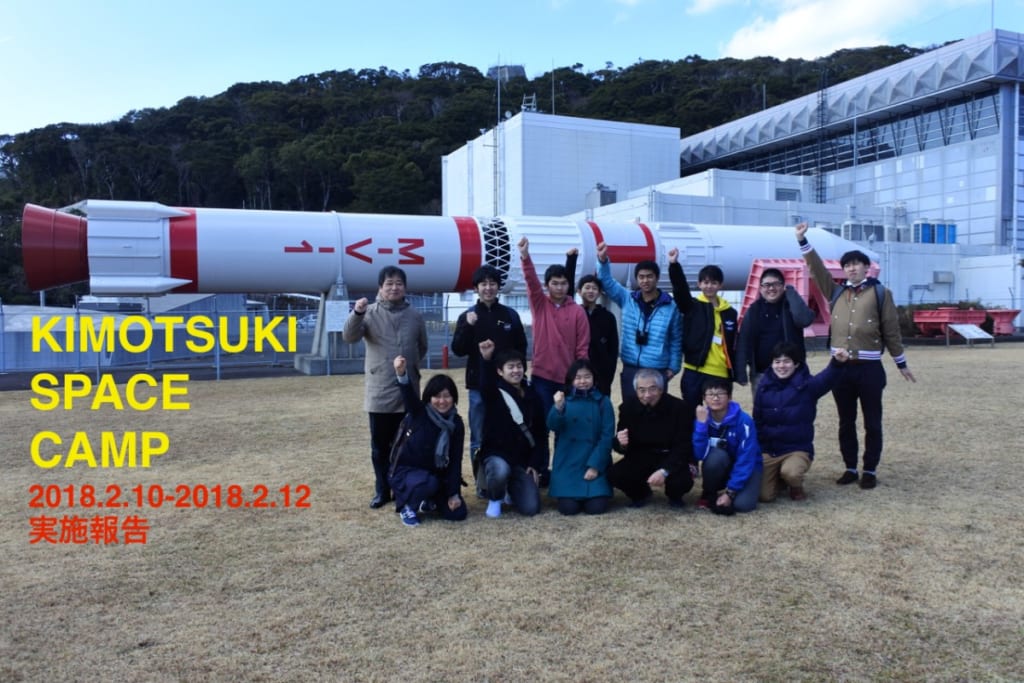
KIMOTSUKI SPACE CAMP 2018 was held from February 10 to 12, 2018. This year, we stepped up from last year's "mission creation" to "basic design creation," and we are pleased to report on the three days of passionate work by the seven elite members.
Day 1
Participants from outside the prefecture (4 students) gathered at Kagoshima Airport. Participants (3) from Kagoshima Prefectural Kusuhaya Junior and Senior High School, which has a space department in Kimotsuki Town, also joined us at Cosmopia Uchinoura, where the camp started.
Mayor Kazuyuki Nagano of Kimotsuki Town also gave a welcome speech. Kimotsuki Town, where Japan's space development began, is where the serious space development by junior and senior high school students started!
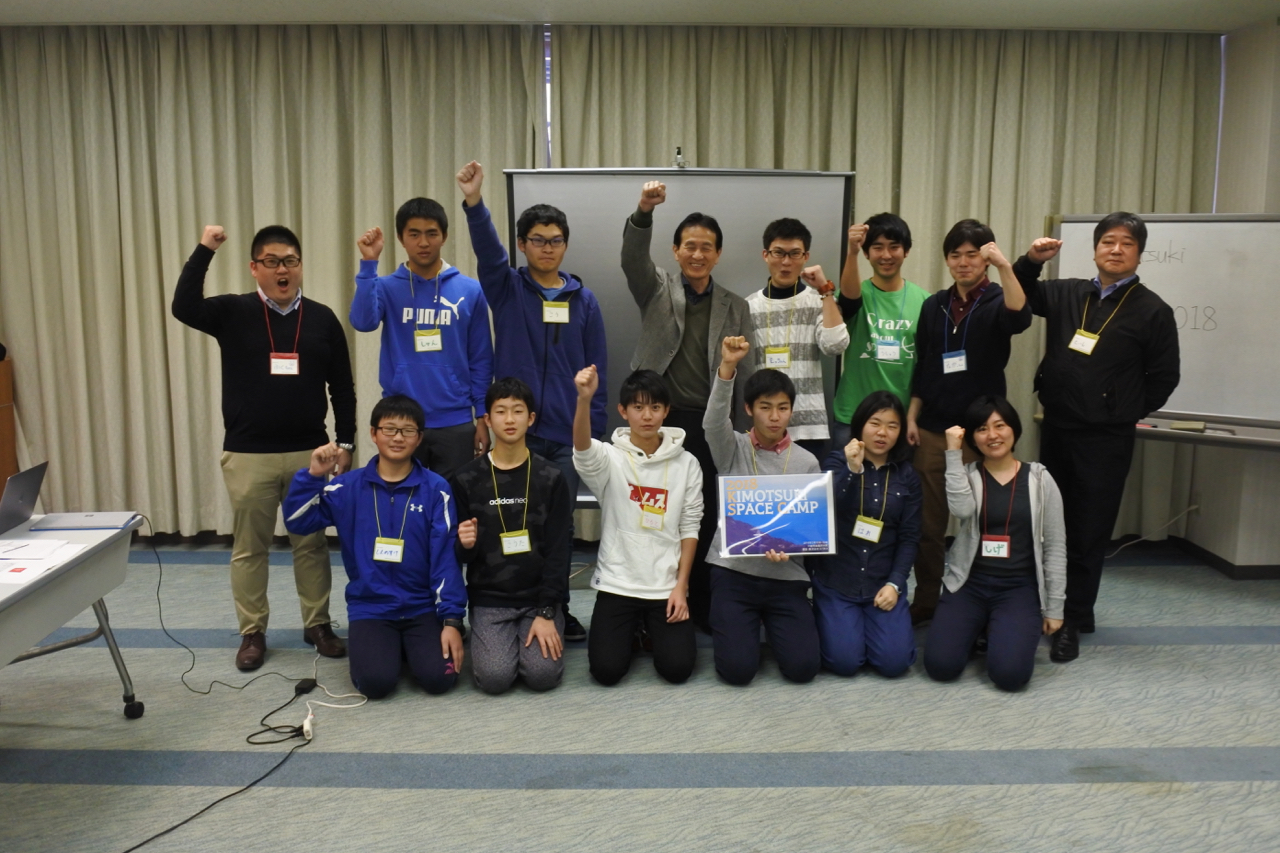
Group photo with the Mayor
Day 1 began with an early input. Advancing Space EducationUchu CorporationMr. Shunsuke Tsuboi, President and Representative Director of the University of Tsukuba, and Mr. Akihiro Nagata, student representative of the University of Tsukuba's Yui Project, who is actually conducting research on satellites, taught us about the history and potential of satellites.
Satellites are divided into two parts: the "mission section," which carries the set mission, and the "bus section," which supports satellite operations. This time, we focused on the "bus section" and wrote up the basic design. After learning about system engineering, we first learned about the six elements of the bus section: attitude, structure, communication, C&DH (Communication and Data Handling Subsystem), power supply, and heat, and their relationship to each other. The key point was that these six elements are closely related to the other parts of the system.
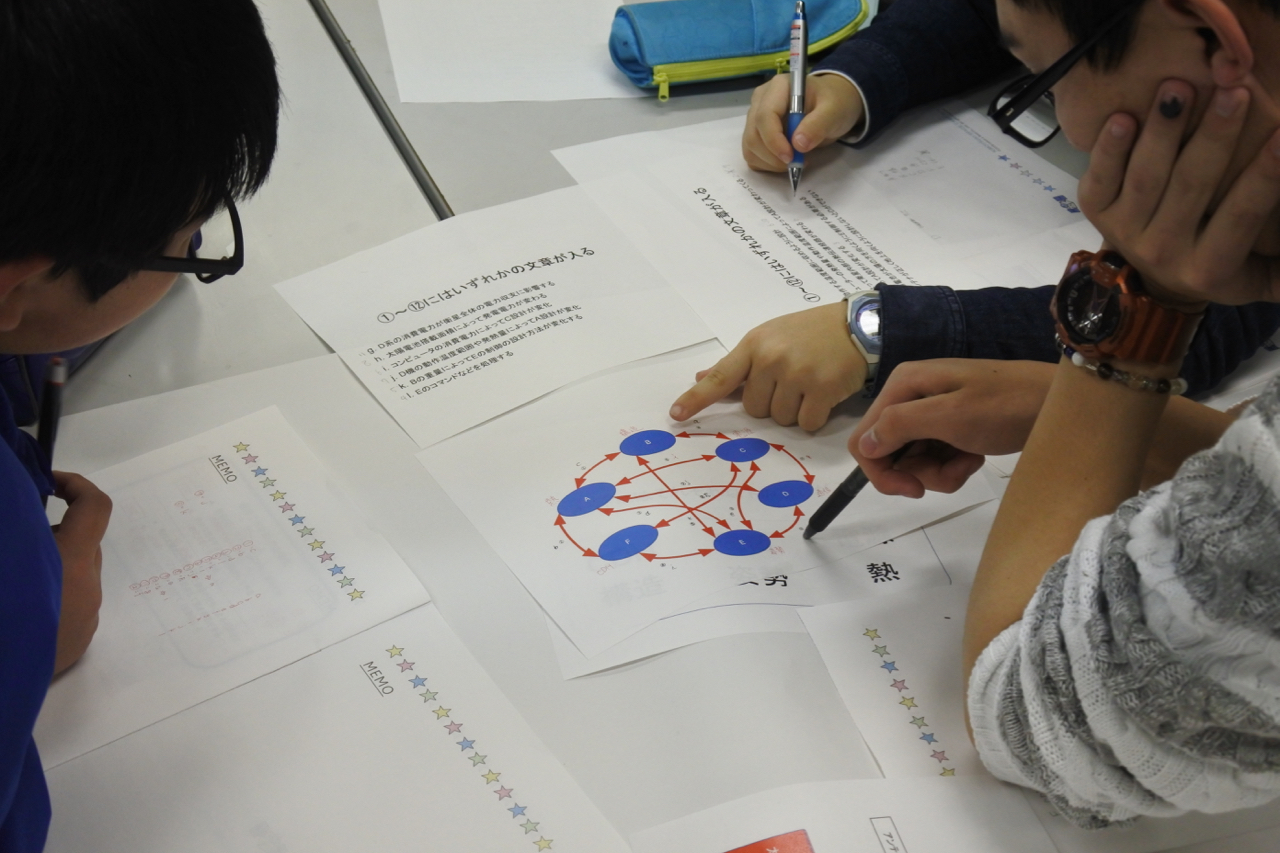
The students had to solve a quiz to find the relationship between the six elements of the bus section.
After understanding the outline of the bus section, it is time for serious input! We read the six elements of "objectives, requirements, design concept/methodology, and mechanism" from the PDR (Primery Design Review) document of the UTYU satellite (tentative name) that was actually launched, and then divided into groups and summarized the contents on posters.
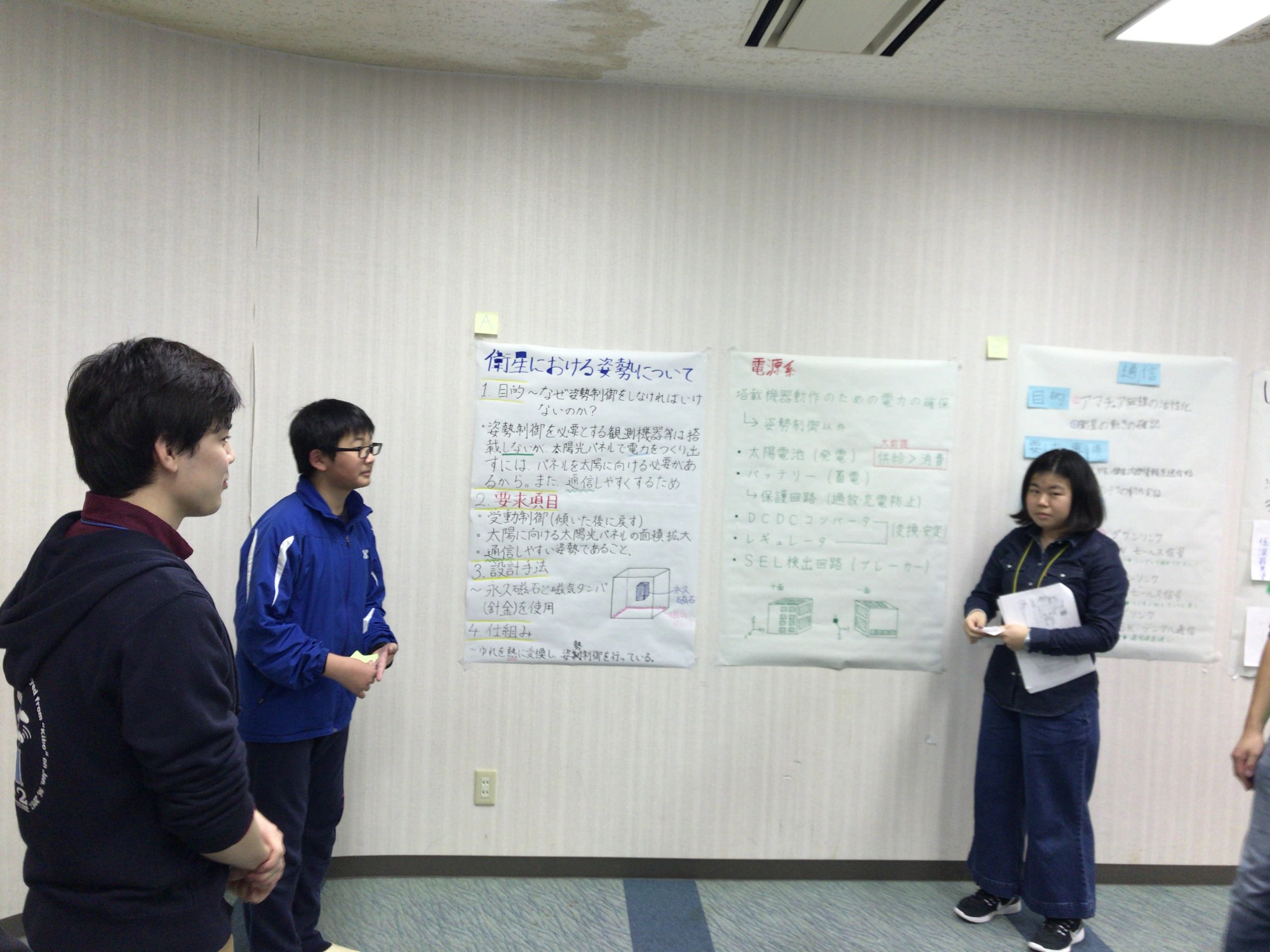
Poster Presentation
2nd day
The second day, which was filled with a lot of fun, started with making antennas to receive satellite signals. Information from satellites flying in space can also be received with a handmade yagi antenna. When everyone pointed their antennas at the blue sky of Uchinoura, they were able to receive the Morse code signals emitted by the artificial sanitation! Although it was only two letters when we analyzed the received signal, we were all able to know the voice of the satellite in space.
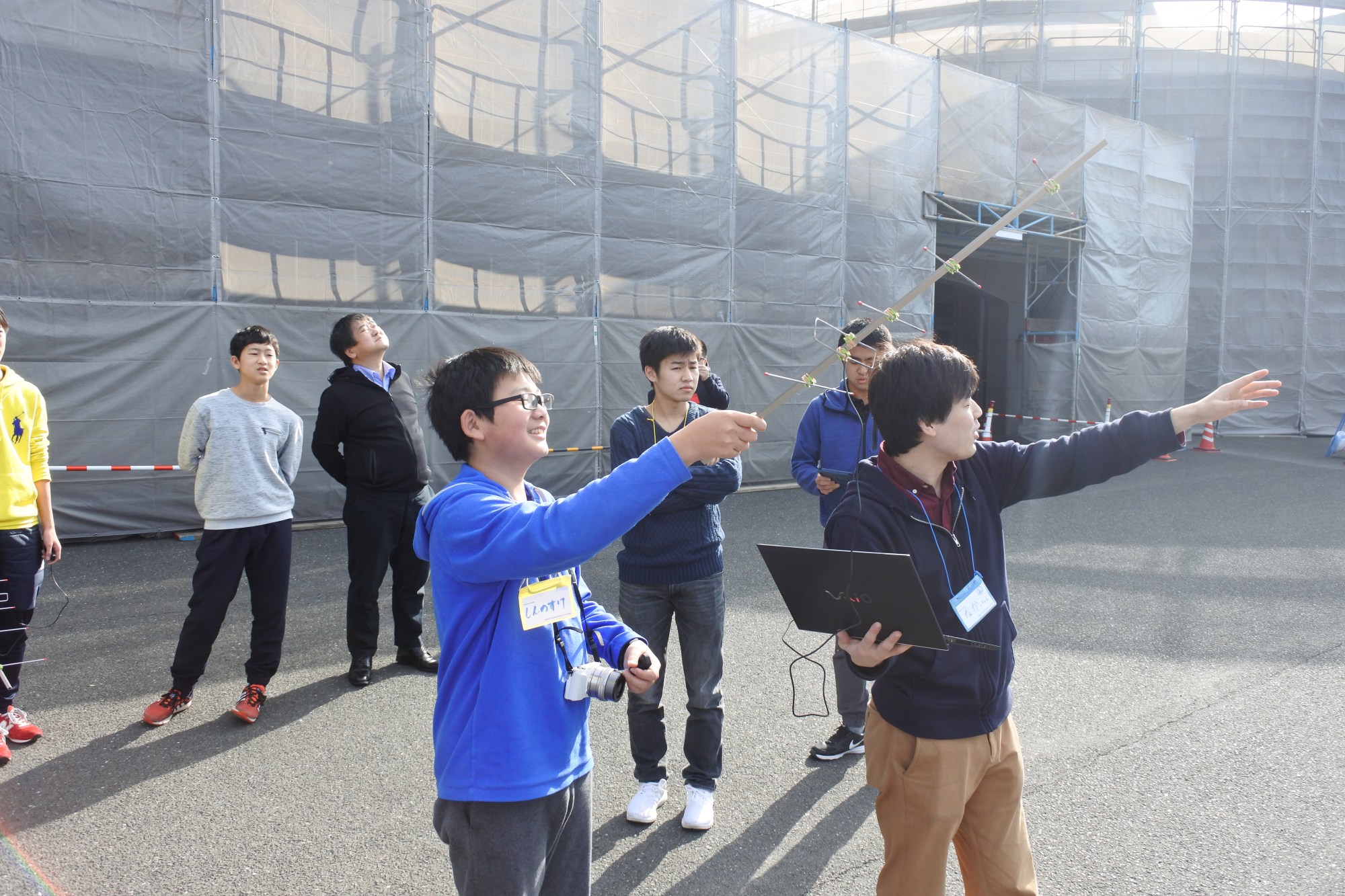
Signal reception!
All the participants were very interested in the launch site where the Epsilon 3 rocket was launched on January 18 and the SS-520 on February 3. Mr. Kohei Morinaga of the Kimotsuki Space Council, who used to work at the launch site, told us about the days when he launched satellites and why Uchinoura was chosen as the launch site. The tour also included a visit to the Space Science Museum, a shrine in the Nagatsubo district where staff members visit during launches, and an evacuation shelter where people from the Nagatsubo district used to shelter during launches.
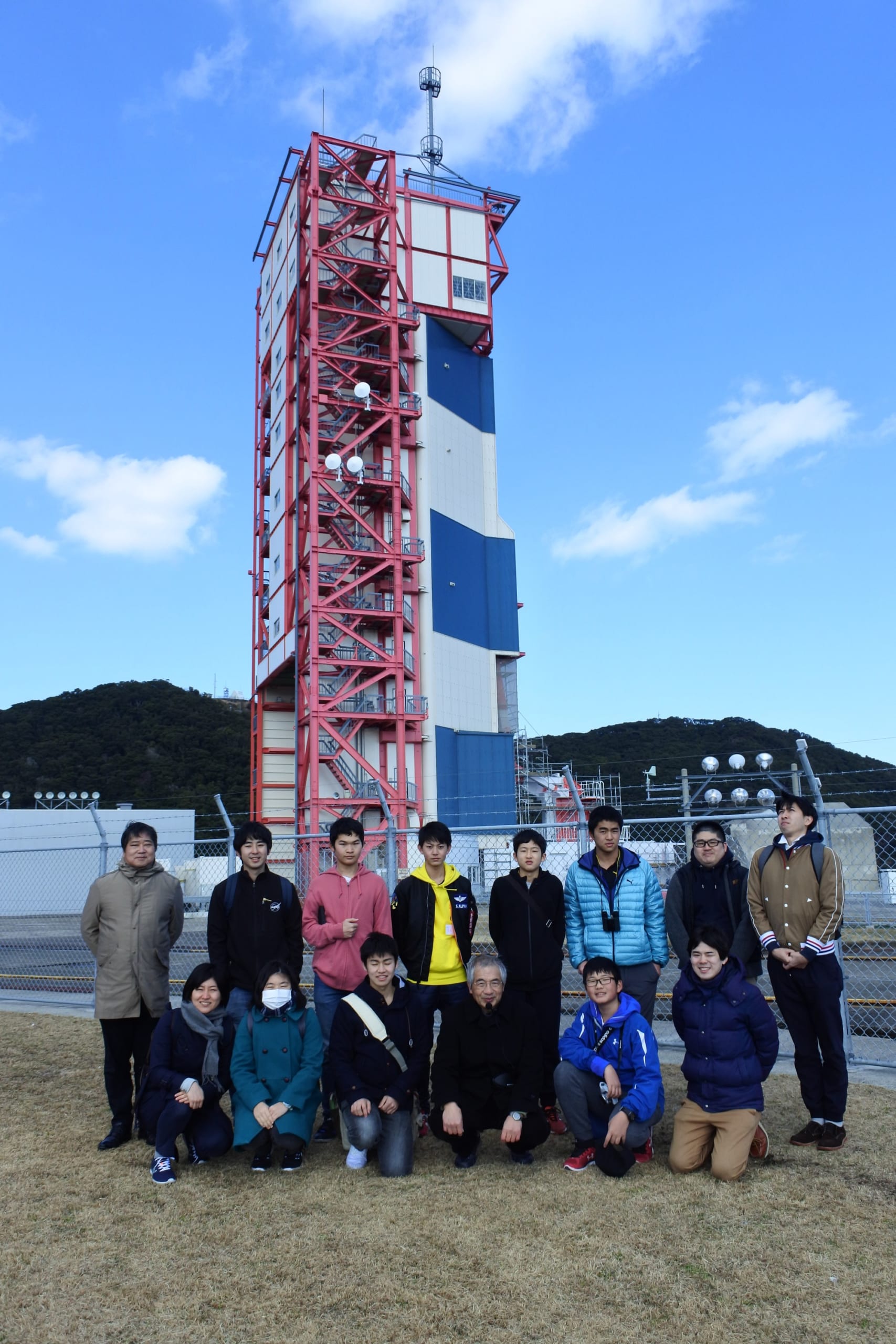
When we returned to Cosmopia Uchinoura, we started to create a basic design for a new satellite. The new mission is "demonstration test of a new type of ultra-small 3-axis attitude control module. This is a new challenge that may change attitude control in space! Once the demonstration test is completed, it may one day be mounted on a robot that will be used in space.
First, we identified areas that needed to be changed from the UTYU satellite we studied yesterday, and each of us presented our changes, considering the impact on the other bus clubs. However, a problem arose here. The new module to be used for the crucial mission would not fit inside the box of the nano-satellite.
We decided to rearrange our priorities and rethink what we could put inside. We also made a cardboard model of the actual module to deepen the discussion.
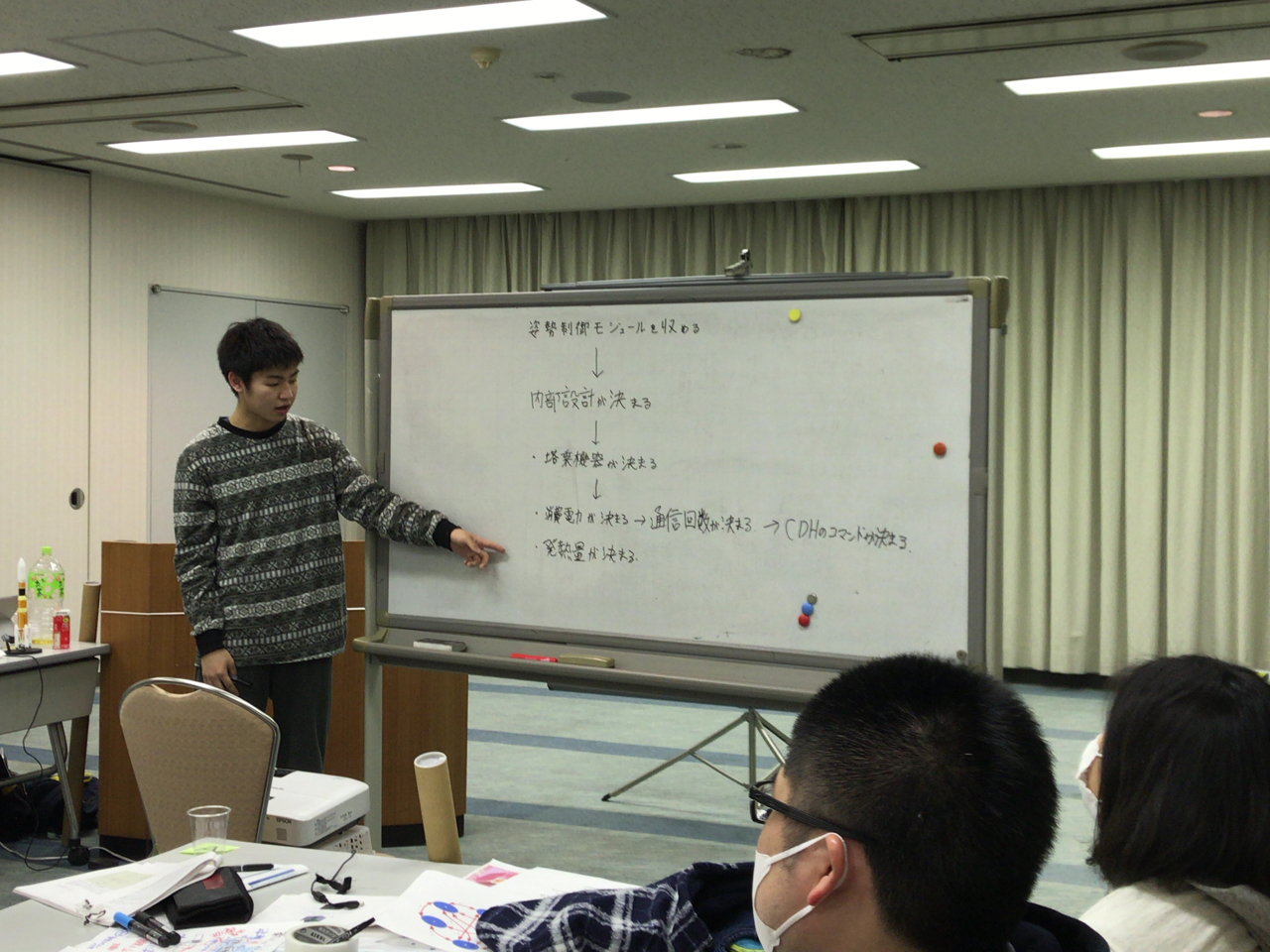
We rethought our priorities to solve the problem.
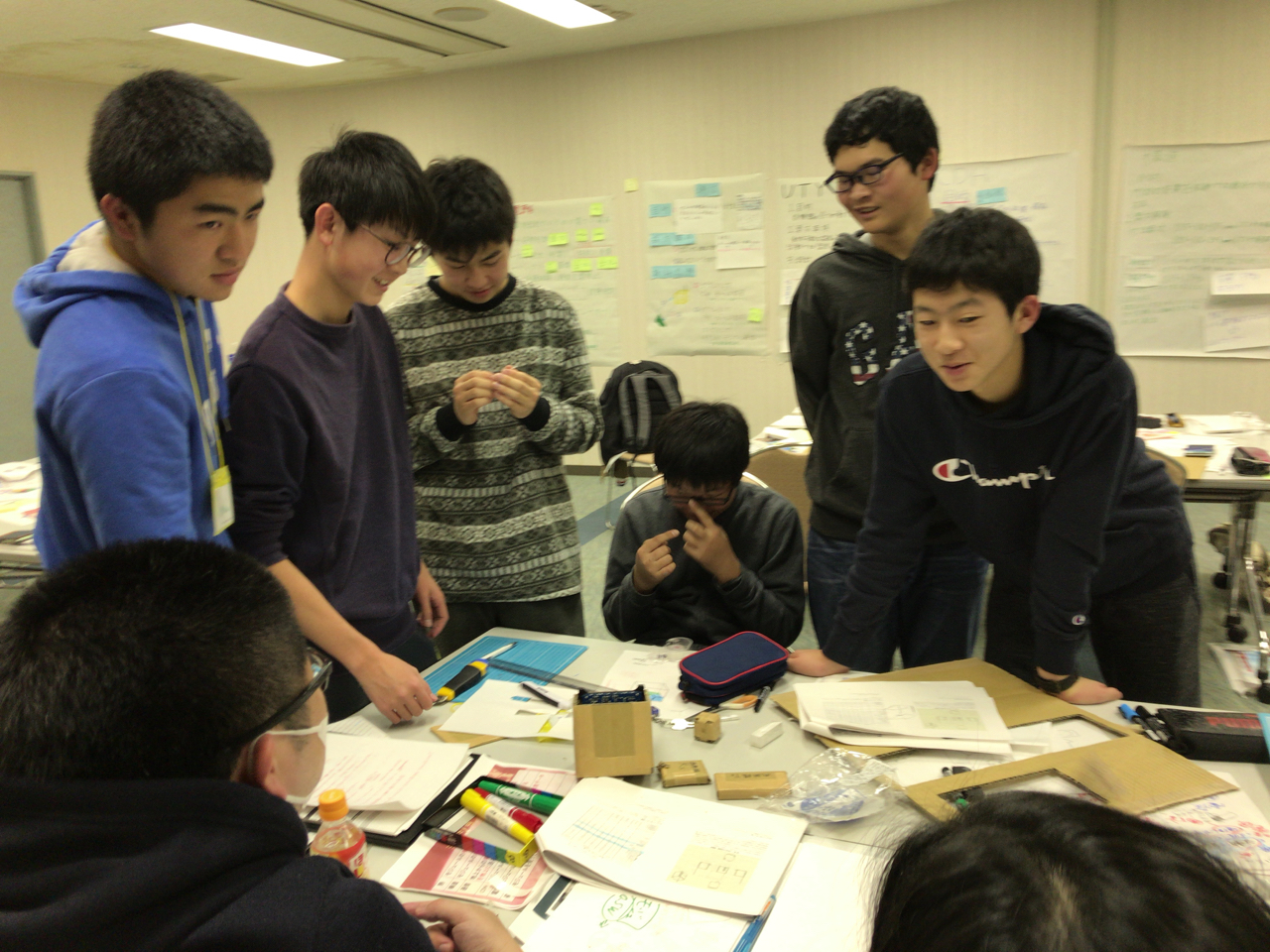
Models of each module were made and discussed.
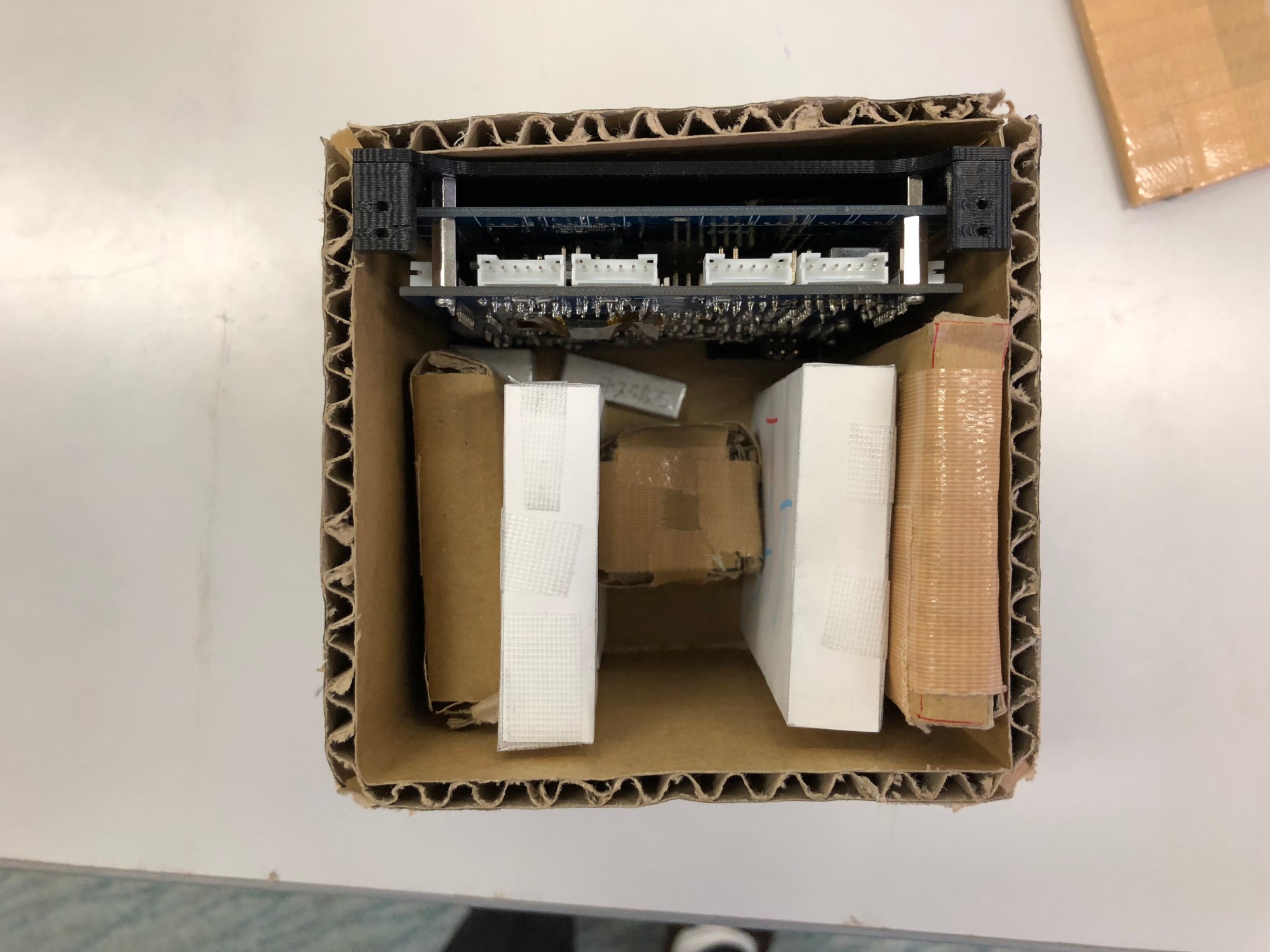
Finally in! The last step was to prepare a presentation for the basic design review board!
3rd day
Finally, it was the last day of the program. The students worked on their presentations, aiming to make them easy to understand and logical, in order to report the results of the three days to Mayor Nagano, who came to see them on the first day.
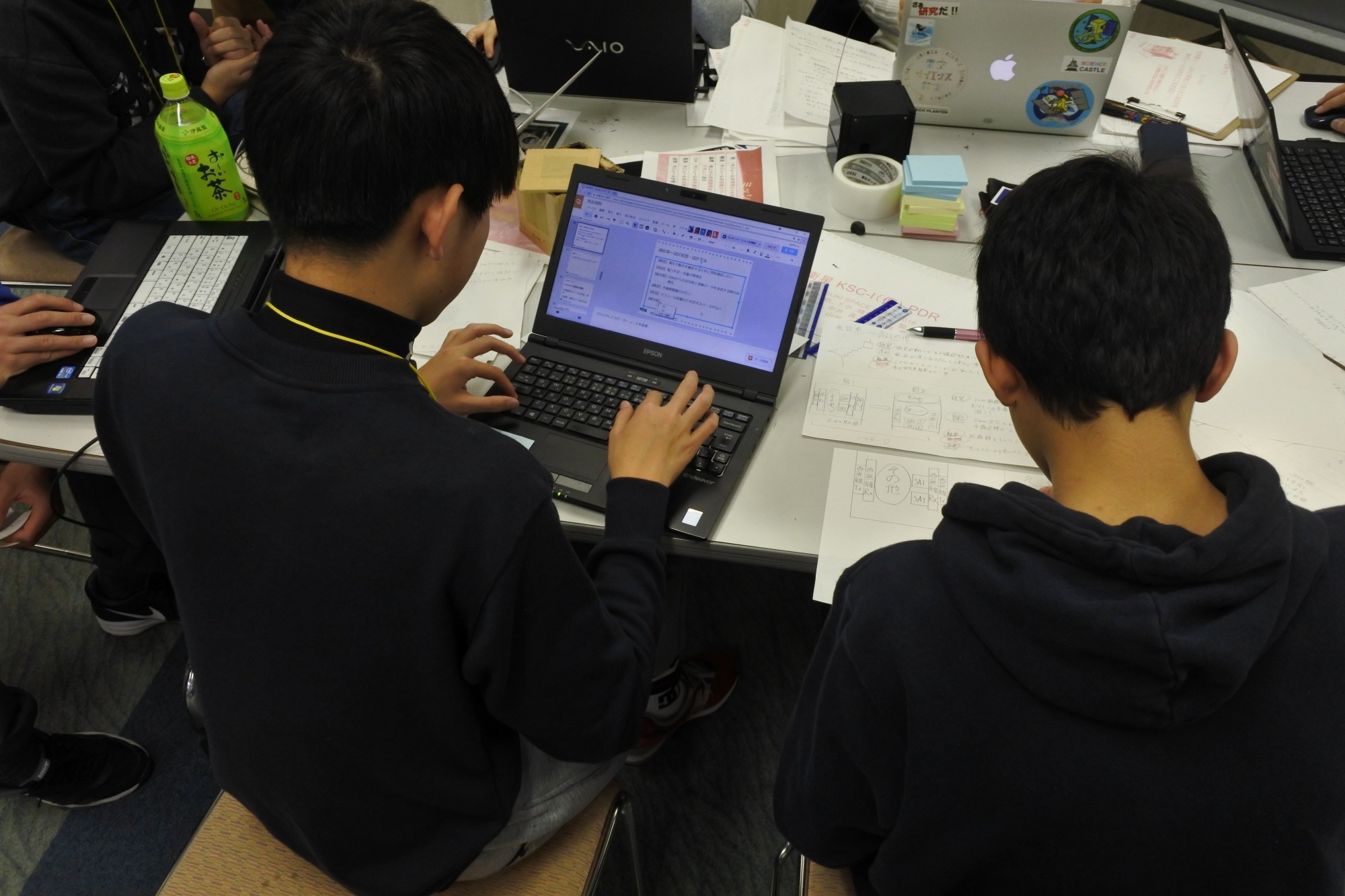
Creating a presentation
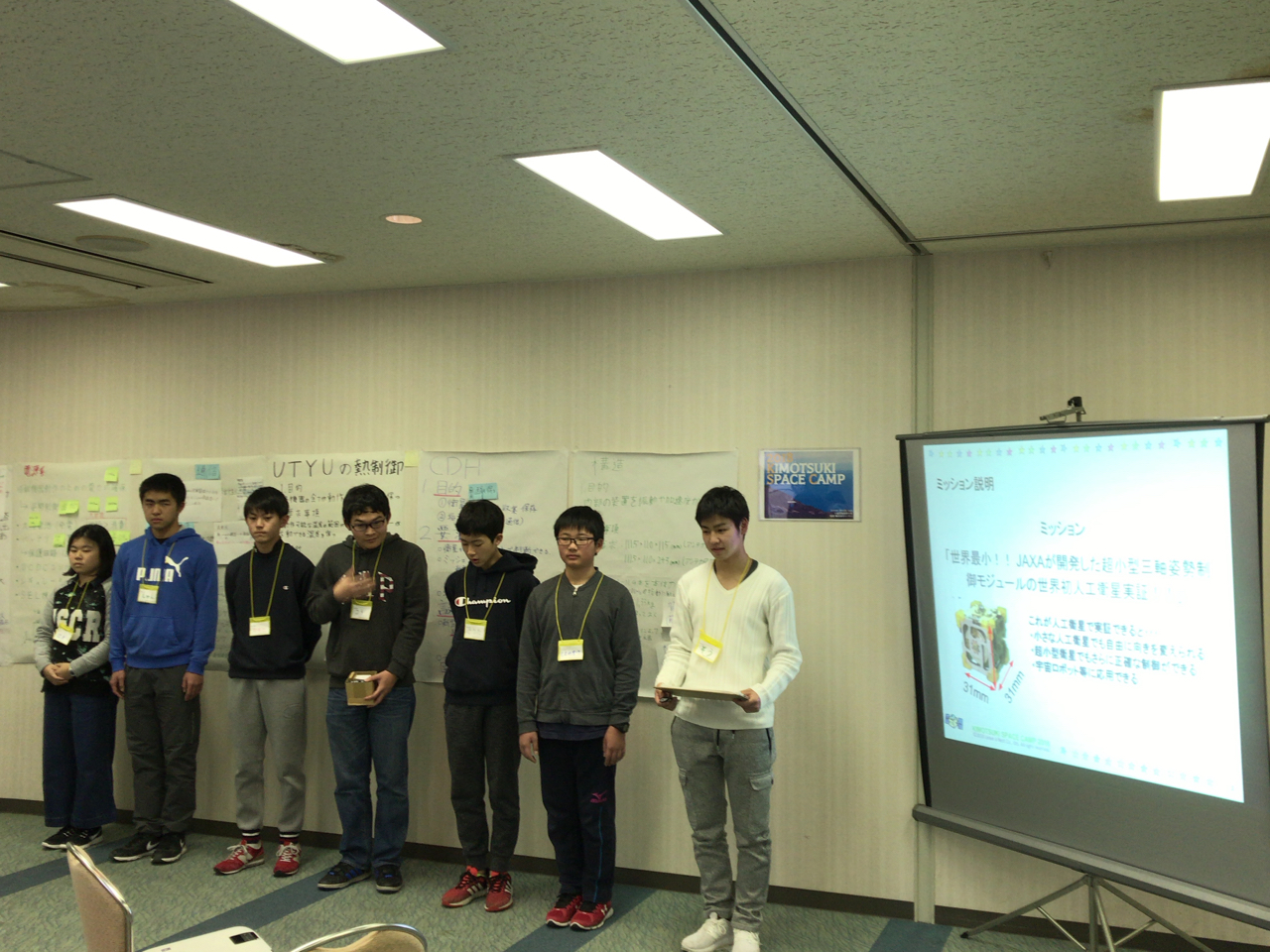
Final presentation! Everyone gave a splendid presentation.
Presentation materials are available at(Please click here)The information can be found at
The three days were a great success, and we made a really good team!
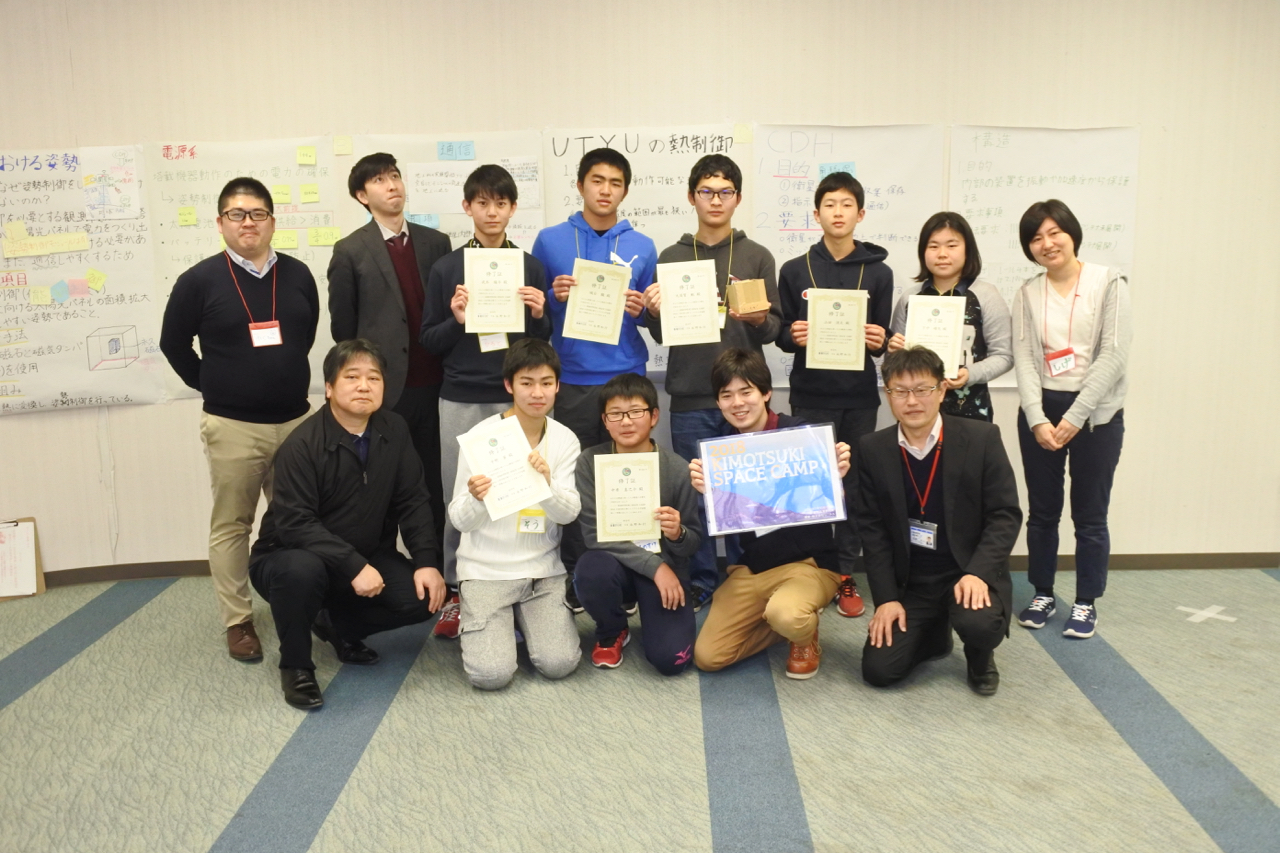
I have taken the first step toward becoming a satellite developer.
Participants who spent three days immersed in space had the following to say.
- When I was first handed out the PDR documents, I had no idea what they said, but as the second day went on, I began to understand them, so I learned a lot for myself.
- It was the first time for me to participate in this event, and I am glad that I was able to experience space development in the real world of space development. We are now at the beginning of our PDR development, but I would like to ask for everyone's cooperation when we are ready to really start flying.
- The design was very difficult, but with everyone's help I was able to achieve my goal. I really enjoyed it.
Our company believes that these three days have shown that "it is possible for junior and senior high school students to create satellite designs. We will continue to work toward the realization of satellite launch and operation by junior and senior high school students. We would like to hear from any company, individual, or organization that is willing to cooperate with us in this project. Let's create a new page in the history of satellite launches by junior and senior high school students!
Camp Overview
Date: Saturday, February 10, 2018 - Monday, February 12, 2018
Location: Kimotsuki Town, Kimotsuki County, Kagoshima Prefecture
Uchinoura Space Center, National Aerospace Laboratory of Japan Aerospace Exploration Agency
Cosmopia Uchinoura, etc.
Organized by Kimotsuki Town
Planning and operation: LIVERNESS Co.
Cooperation:Uchu Corporation
Travel services:Kagoshima Travel Agency Cooperative Fascinating Travel
Inquiries about this matter
Riverness Community Development Division, Inc.
Phone: 03-5227-4198 Email: [email protected]
